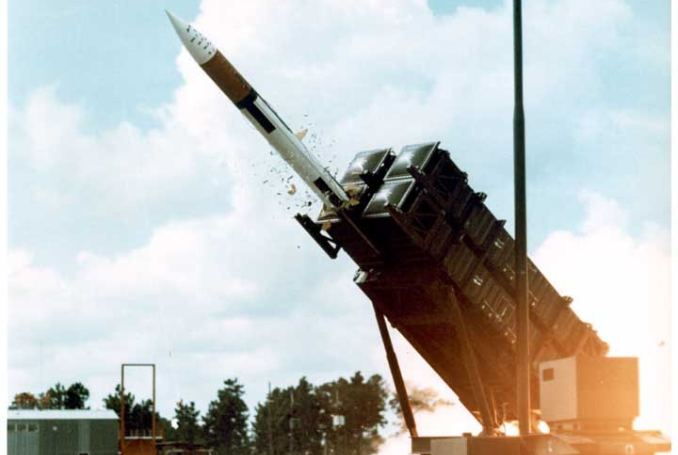
Later, it was admitted by unnamed US and Israeli officials that 99 percent interception rate was a bogus claim.
During Iran’s retaliatory attack on Israel in mid-April, US air defense systems failed to work against Tehran’s ballistic missiles, according to the Israeli army radio.
This has led to Israel portraying itself as having been let down by the United States and taking on the majority of the burden in shooting down most of Iran’s some 300 drones and missiles fired at them.
Bogus Claim
Shortly after Iran’s retaliatory attack on Israel concluded on April 13, Tel Aviv boasted a “99 percent interception rate” and even conjured up a special name for its joint air defense operation in order to spin the situation into a heroic victory for the regime.
In reality, Iran’s Islamic Revolutionary Guard Corps (IRGC) fired batches of old drones and missiles with the dual intended purpose of creating a major panic/international incident and also distracting the air defense response.
The IRGC then fired around a dozen modern ballistic missiles, most of which hit their targets, striking sites that are considered the most heavily guarded against ballistic missile attacks on the planet.
Later, it was admitted by unnamed US and Israeli officials that 99 percent interception rate was a bogus claim and even the admission that around a dozen missiles hit blows the allegation out of the water.
The air defense operation, utilizing a multi-national coalition of militaries from the US, UK, France, Israel, Jordan and according to some reports Saudi Arabia and the United Arab Emirates (UAE), over a billion dollars was reportedly spent combating the five-hour event.
In addition to this, the coalition was given 72 hours pre-warning, therefore was able to ready all air defenses across the region and had hours to confront relatively slow moving targets which Iran announced had been fired with each new batch.
The details aside, the Israelis mounted a face-saving attack that appears to have not even struck a single target inside Iran and then pivoted to undermining the US’s air defense capabilities.
Patriot Missile System
According to an Israeli media report, the US’s RIM-161 Standard Missile 3 (SM-3) ship-mounted defense system had a 75 percent failure rate at intercepting Iranian projectiles, while separate Israeli media reports indicated that the prized Patriot Missile system only managed to shoot down one Iranian ballistic missile.
Bloomberg News recently released an article in which they say Israel is now retiring the Patriot Missile systems.
Iran’s Retaliation Against Israel: The ‘Theater’ and the Spectators
Yet, according to all reporting on the air defense operation mounted to defend the Israelis, the majority of the Iranian projectiles intercepted were shot down by the US and the most effective method was through the usage of fighter jets.
Despite there being no evidence to back up their claims, the Israeli military claims that their fighter jets shot down most of Iran’s cruise missiles, which was contradicted by sources who spoke to The Intercept who argued the opposite.
Israel has been unhappy with the US’s Patriot Missile system, since the time of the First Gulf War.
In 1991, Iraq fired Scud missiles at both Israel and Saudi Arabia. The US and its media claimed that the Patriot Missile System intercepted 89 percent of the Scuds fired at Saudi Arabia and 44 percent of the warheads directed towards the Israelis; however, months later the truth began to surface and it is now accepted that the performance of the famed Patriot Missile System was that it shot down between 1 and zero of all the Scuds fired.
Similarly, the Iron Dome Air Defense System is said to boast a 85 percent interception rate, at least this is the figure presented for the interception of Palestinian rockets fired during the 2014 war on Gaza.
‘Not Drones but Children’s Toys’ – Iran Ridicules Impact of Israeli ‘Response’ (VIDEO)
However, according to a study conducted by Theodore Postol, of MIT, the Iron Dome only intercepted around 5 percent of the projectiles fired during the 2014 war.
In reality, despite the propaganda of the Military Industrial Complex in making air defense systems appear to be incredibly effective, if enough munitions are fired at a target there is no defense system on the planet that will be successful in fully combating a large and concentrated attack.
(The Palestine Chronicle)

– Robert Inlakesh is a journalist, writer, and documentary filmmaker. He focuses on the Middle East, specializing in Palestine. He contributed this article to The Palestine Chronicle.








This was indeed a big victory for Iran. The vast majority of the 300 missiles and drones it launched at the genocidal Zionist entity were Iran’s oldest and least powerful missiles and drones, which Israel spent a total of $1.35 billion to shoot down. But yet, between 12 to 20 Iranian missiles (newer and more powerful) managed to precisely hit their targets, and inflict heavy damage. And, how much money did Iran pay for this particular operation (True Promise)? No more than $27.4 million.
The next time Iran attacks the genocidal Zionist entity (for any act of terrorism it might commit again against Iran), it will certainly be with much faster and more powerful missiles and drones (perhaps as many as three thousand the next time around, or even more than that). Moreover, the next time around, Iran will certainly not inform Israel’s protector (USA) about exactly which day, and exactly what hour, it’s planning to attack Israel. What happened back in April, was just a warning shot against Israel. The next time around, Iran will hit Israel with a massive blizzard of missiles, coming at it from so many different directions, and without any kind of warning in advance.